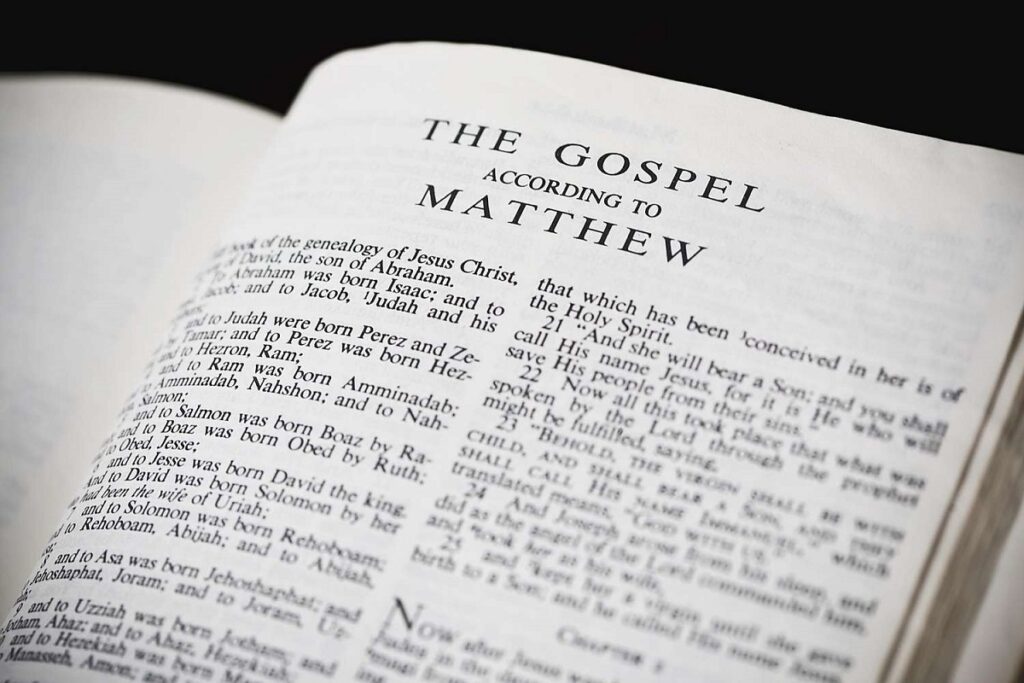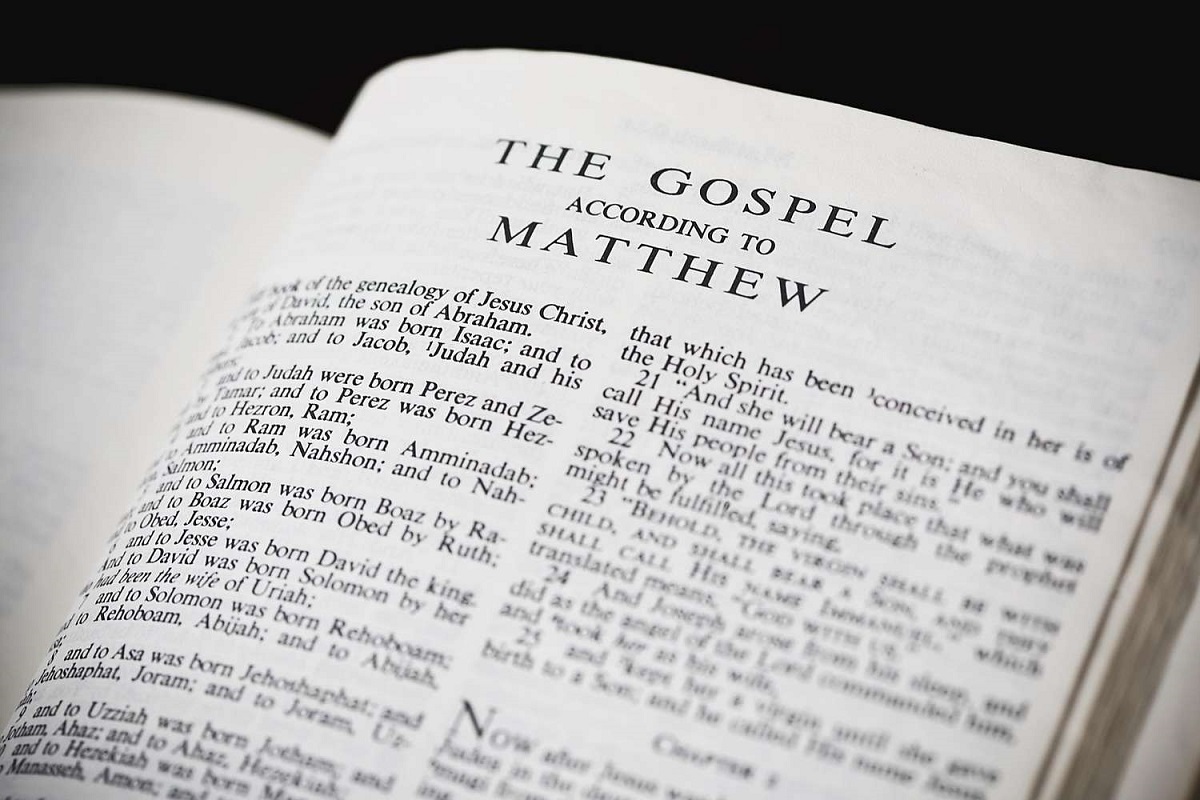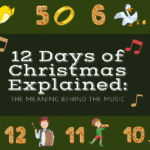In the vast landscape of the New Testament, the Book of Matthew which is the first book of the New Testament and one of the four Gospels stands out as a cornerstone, offering a profound exploration of Jesus Christ as the long-awaited Messiah. This Gospel, often referred to as the Gospel of Matthew, bridges the Old Testament prophecies with the life, teachings, and ultimate sacrifice of Jesus. For believers and scholars alike, understanding the Book of Matthew is essential to grasping how Jesus fulfills the role of the Messiah, the anointed one.

In this article, we will unpack the richness of the Book of Matthew, exploring how it emphasizes Jesus’ messianic identity through fulfilled prophecies, miraculous acts, and transformative teachings; as well as the authorship, structure, key themes, major events, and enduring relevance of Matthew’s Gospel, highlighting its portrayal of Jesus as the Savior who brings the Kingdom of Heaven to earth.
Authorship and Historical Context of the Gospel of Matthew
The Gospel of Matthew is the first book in the New Testament and one of the three Synoptic Gospels, sharing similarities with Mark and Luke. Traditionally attributed to Matthew, a tax collector and one of Jesus’ twelve apostles, this authorship is based on early church fathers like Papias of Hierapolis around 60–130 AD. However, modern scholars largely view the Gospel as anonymous, suggesting it was composed by a second-generation Christian, possibly incorporating earlier sources linked to Matthew. The author appears to be a Greek-speaking Jewish Christian, well-versed in Jewish law and scriptures, writing for a community facing tensions between Jewish traditions and emerging Christianity.
Understanding the Book of Mark: Jesus Christ the Servant
Dating the Gospel is debated, with most scholars placing it in the late first century, around 80–90 AD, after the destruction of the Jerusalem Temple in 70 AD. This post-70 AD context is evident in references to the Temple’s fall, reflecting a time when Jewish Christians were distinguishing themselves from mainstream Judaism. Some conservative scholars, like N.T. Wright, argue for an earlier date in the 40s–50s AD, but the consensus leans toward a Syrian origin, perhaps Antioch, where Jewish and Gentile Christians coexisted.
This historical backdrop is crucial for understanding Matthew’s emphasis on Jesus as the Messiah. The Gospel addresses a Jewish audience grappling with Jesus’ rejection by many religious leaders, using Old Testament references to affirm his legitimacy. It critiques Pharisees and scribes while upholding the Law, showing Jesus as its fulfiller rather than abolisher. In a era of Roman occupation and Jewish unrest, Matthew portrays Jesus as the true King of the Jews, offering hope amid upheaval.
Structure of the Book of Matthew
The Book of Matthew is carefully structured, comprising 28 chapters that alternate between narrative sections and discourses. This structure is often seen as paralleling the five books of the Torah (Pentateuch), underscoring Matthew’s Jewish roots. The Gospel divides into five major discourses, each ending with the phrase “When Jesus had finished,” signaling transitions:
- Sermon on the Mount (Chapters 5–7): Ethical teachings on the Kingdom of Heaven.
- Missionary Discourse (Chapter 10): Instructions to the disciples.
- Parables of the Kingdom (Chapter 13): Stories illustrating God’s reign.
- Community Discourse (Chapter 18): Guidelines for church life.
- Olivet Discourse (Chapters 24–25): Prophecies about the end times.
Understanding the Book of Luke: Jesus Christ the Savior
Narratives weave around these, starting with Jesus’ genealogy and birth, moving through his Galilean ministry, journey to Jerusalem, and culminating in the Passion and Resurrection. Some interpreters see a three-part structure:
- The genealogy and preparation for ministry (Chapters 1–4): The birth narrative of Jesus, baptism, temptation, and the beginning of His ministry.
- The Teachings and Miracles of Jesus (Chapters 5–25): Includes the Sermon on the Mount, parables, miracles, and confrontations with religious leaders.
- The Passion Narrative and resurrection (Chapters 26–28): The betrayal, trial, crucifixion, death of Jesus, His victory over death and the Great Commission.
Others note geographic progression from Galilee to Jerusalem, symbolizing the spread of the Gospel.
This intentional design highlights thematic unity, with recurring motifs like the Kingdom of Heaven (mentioned 32 times) and fulfillment of prophecy. Matthew’s use of “threes” (e.g., three temptations, three denials by Peter) and chiastic patterns adds literary depth, making the text memorable and theologically rich.
Portrayal of Jesus as the Messiah in Matthew
Central to the Book of Matthew is the depiction of Jesus Christ as the Messiah, the promised descendant of David who establishes God’s kingdom. Unlike other Gospels, Matthew begins with a genealogy tracing Jesus back to Abraham and David, establishing his royal lineage and fulfilling messianic expectations from the Old Testament. Jesus is called “Son of David” nine times, emphasizing his role as Israel’s rightful king.
Understanding the Book of John: Jesus Christ the Son of God
Matthew presents Jesus in multifaceted roles: as Son of Man, who will judge the world; as Son of God, divine and obedient; and as Immanuel, “God with us.” His miracles demonstrate authority over nature, illness, and demons, proving his messianic power. For instance, healing the blind and lame echoes Isaiah’s prophecies of the Messiah’s works. The Gospel shows Jesus sent primarily to Israel, yet extending grace to Gentiles, foreshadowing the church’s universal mission.
Critically, Matthew addresses Jewish objections by portraying Jesus as the new Moses—delivering the Sermon on the Mount from a mountain, like Moses on Sinai—and as the suffering servant who endures rejection. This portrayal resolves the paradox of a crucified Messiah, transforming apparent defeat into victory through resurrection. For Matthew’s audience, amid synagogue-church conflicts, Jesus is the Messiah who redefines kingship through service and sacrifice, inviting all to his kingdom.
Fulfillment of Old Testament Prophecies in Matthew
One of Matthew’s hallmarks is its frequent citation of Old Testament prophecies to affirm Jesus as the Messiah. The phrase “this was to fulfill what was spoken by the prophet” appears over a dozen times, linking Jesus’ life to scriptures like Isaiah, Micah, and Psalms. This “fulfillment” motif isn’t mere prediction but shows Jesus embodying God’s promises in a deeper, eschatological sense.
Key examples include:
- Virgin Birth (Matthew 1:22-23): Fulfills Isaiah 7:14, portraying Jesus as born of the Virgin Mary, signifying divine intervention.
- Birth in Bethlehem (Matthew 2:5-6): Echoes Micah 5:2, confirming the Messiah’s origin in David’s city.
- Flight to Egypt (Matthew 2:15): Draws from Hosea 11:1, symbolizing Jesus as the new Israel.
- Ministry in Galilee (Matthew 4:14-16): Fulfills Isaiah 9:1-2, bringing light to the Gentiles.
- Healing Miracles (Matthew 8:17): Aligns with Isaiah 53:4, the suffering servant bearing infirmities.
- Triumphal Entry (Matthew 21:4-5): Quotes Zechariah 9:9, with Jesus riding a donkey as the humble king.
- Betrayal for 30 Pieces of Silver (Matthew 27:9-10): References Zechariah 11:12-13 and Jeremiah.
Understanding the Book of Acts: Church and Mission
Scholars note Matthew sometimes adapts prophecies typologically, seeing patterns in Israel’s history repeated in Jesus. This approach convinced early Jewish Christians that Jesus was the Messiah, countering claims he did not match expectations. Up to 800 Old Testament verses are seen as messianic by some, with Matthew highlighting dozens to build a compelling case.
Genealogy and Birth Narrative: Establishing Messianic Roots
Matthew opens with Jesus’ genealogy, a deliberate choice to root his messiahship in Jewish heritage. Divided into three sets of 14 generations—from Abraham to David, David to the Babylonian exile, and exile to Jesus—this structure symbolizes completeness and divine order (14 being twice seven, a number of perfection). It includes notable women like Tamar, Rahab, Ruth, and Bathsheba, hinting at God’s inclusive plan beyond traditional lines.
The birth narrative (Chapters 1–2) emphasizes the miraculous: Joseph’s dream revealing the virgin conception by the Holy Spirit, fulfilling Isaiah’s prophecy. Wise men from the East recognize Jesus as King of the Jews, bringing gifts that symbolize his roles—gold for kingship, frankincense for divinity, myrrh for suffering. Herod’s massacre of innocents echoes Pharaoh’s infanticide, positioning Jesus as a new deliverer. The family’s flight to Egypt and return to Nazareth fulfill prophecies, portraying Jesus as the Messiah who relives Israel’s story.
This section sets the tone, showing Jesus not as an ordinary figure but as the divinely ordained Savior, born under threat yet protected by God.
Key Teachings and Miracles in the Book of Matthew
Matthew’s Gospel is rich with Jesus’ teachings and miracles, demonstrating his authority as Messiah. The Sermon on the Mount (Chapters 5–7) is a pinnacle, outlining Kingdom ethics through the Beatitudes—blessing the poor in spirit, meek, and merciful. Jesus intensifies the Law: not just avoiding murder but anger; not adultery but lust. He teaches prayer (the Lord’s Prayer), fasting, and trusting God over worry, urging followers to build on rock, not sand.
Miracles abound in this book, showing forth Jesus’ power as the Messiah. In Chapters 8–9 alone, ten miracles occur, including:
- Healing a leper (8:1-4), centurion’s servant (8:5-13), and Peter’s mother-in-law (8:14-15).
- Calming a storm (8:23-27), revealing authority over nature.
- Casting out demons (8:28-34) and healing a paralytic (9:1-8), forgiving sins.
- Raising Jairus’ daughter (9:18-26) and healing a bleeding woman.
- Restoring sight to two blind men (9:27-31) and speech to a mute (9:32-34).
These acts fulfill prophecies like Isaiah 35:5-6 and affirm Jesus’ divine mission. Later miracles include feeding 5,000 (14:13-21) and 4,000 (15:32-39), walking on water (14:22-33), and healing multitudes. They categorize into healings of acute/chronic illnesses, disabilities, exorcisms, and nature miracles, proving Jesus’ comprehensive authority.
Parables of the Kingdom in Matthew
Parables form a core of Jesus’ teaching in Matthew, especially in Chapter 13, where seven illustrate the Kingdom of Heaven’s mysteries. These stories use everyday imagery to reveal spiritual truths, often confounding outsiders while enlightening disciples.
See Also: Understanding The New Testament: Matthew To Revelation
Notable parables include:
- Sower (13:3-9): Seed on different soils represents responses to God’s word.
- Wheat and Tares (13:24-30): Good and evil coexist until judgment.
- Mustard Seed (13:31-32): Kingdom starts small but grows vast.
- Leaven (13:33): Kingdom permeates like yeast in dough.
- Hidden Treasure and Pearl (13:44-46): Worth sacrificing all for.
- Net (13:47-50): Separates righteous from wicked at the end.
Other parables scatter throughout: the unforgiving servant (18:23-35) on mercy, laborers in the vineyard (20:1-16) on grace, and wedding banquet (22:1-14) on invitation and rejection. Matthew’s parables emphasize God’s sovereignty, the Kingdom’s present-yet-future nature, and ethical demands, portraying Jesus as the wise teacher unveiling divine secrets.
The Passion, Death, and Resurrection: Climax of the Messianic Mission
The latter chapters (26–28) focus on Jesus’ final week, the Passion narrative. Beginning with the triumphal entry into Jerusalem on a donkey (21:1-11), fulfilling Zechariah, Jesus cleanses the Temple and debates leaders. The Last Supper institutes the Eucharist, symbolizing his body and blood for the new covenant.
Betrayed by Judas for 30 silver pieces, Jesus is arrested, tried by the Sanhedrin and Pilate, and crucified. Supernatural signs—darkness, earthquake, torn Temple veil—accompany his death, affirming its cosmic significance. Buried in Joseph’s tomb, Jesus rises on the third day, appearing to women and disciples.
The Resurrection vindicates his messiahship, with the Great Commission (28:18-20) commanding global discipleship, baptism, and teaching. This ending shifts from Jewish focus to universal mission, with Jesus promising eternal presence.
Key Passages in Matthew Highlighting Jesus as the Messiah
- Matthew 1:21–23 – The angel declares that Jesus will “save His people from their sins” and will be called Immanuel (God with us).
- Matthew 3:17 – At Jesus’ baptism, God affirms Him: “This is my beloved Son, with whom I am well pleased.”
- Matthew 5:17 – Jesus declares, “Do not think that I have come to abolish the Law or the Prophets; I have not come to abolish them but to fulfill them.”
- Matthew 16:16 – Peter confesses, “You are the Christ, the Son of the living God.”
- Matthew 28:18–20 – The Great Commission, affirming Jesus’ ultimate authority.
Each of these passages strengthens the identity of Jesus as the Messiah and Savior.
Recommended: Understanding The Bible: Genesis to Revelation
Relevance of the Book of Matthew Today
Why Matthew’s Portrayal of Jesus as Messiah Matters Today
For Believers
Matthew’s Gospel reassures Christians that their faith is grounded in historical truth and prophecy. It affirms that Jesus’ life and mission were not accidental but part of God’s eternal plan. For personal faith, it offers guidance on living in the Kingdom of Heaven through humility, service, and obedience.
For Non-Believers and Seekers
For those exploring Christianity, Matthew provides compelling evidence of who Jesus is. The fulfillment of prophecy, His divine authority, and His teachings make a strong case for Jesus as more than a teacher or prophet—He is the Messiah.
For the Church
The Gospel of Matthew continues to guide the Church in its mission. The Great Commission reminds believers of their responsibility to share the Good News, disciple others, and reflect the Kingdom of God on earth.
Lessons from the Book of Matthew
- Faith in God’s Promises: Just as the prophecies were fulfilled in Jesus, God’s promises remain trustworthy today.
- The Call to Righteousness: True discipleship requires not just external acts but inner transformation.
- Kingdom Living: Believers are called to reflect the values of the Kingdom—love, forgiveness, humility, and justice.
- Endurance in Trials: Matthew’s account of Jesus’ suffering encourages Christians to remain faithful during hardship.
- Mission-Mindedness: Every believer is called to participate in spreading the Gospel to all nations.






